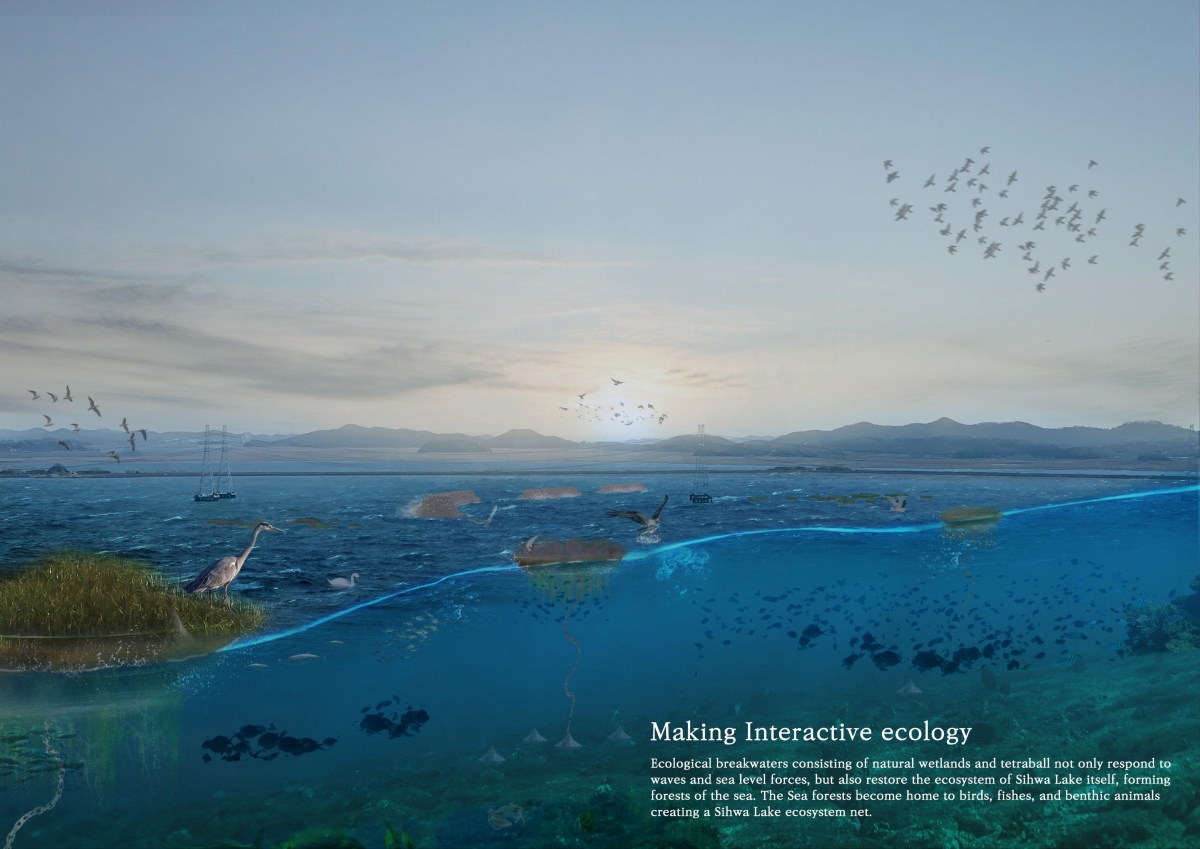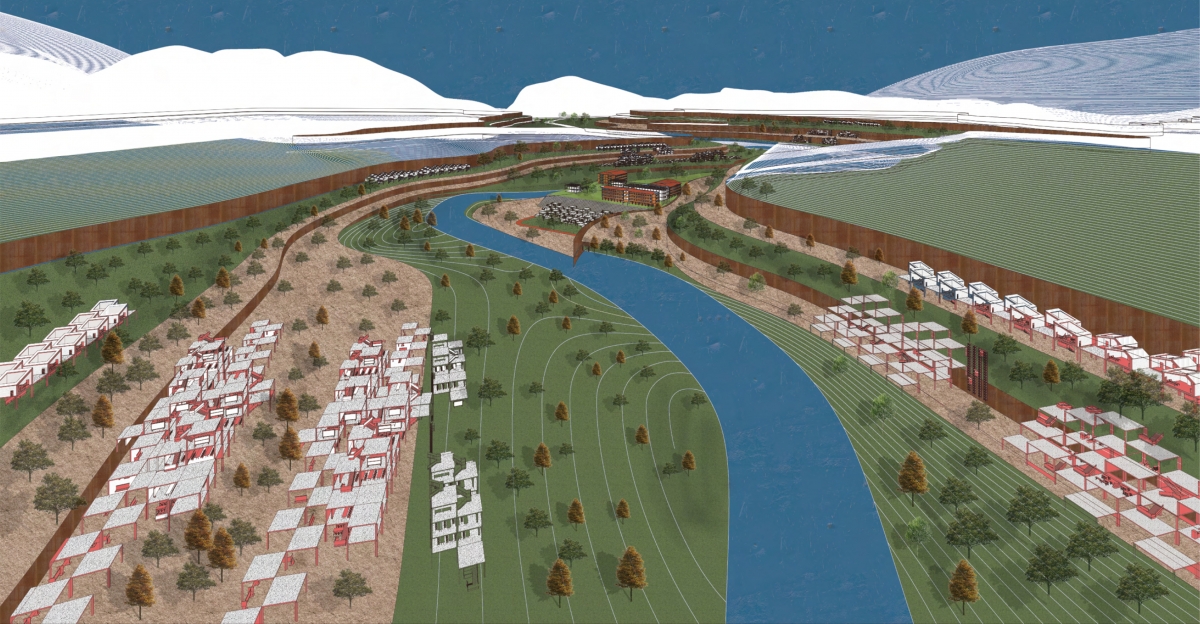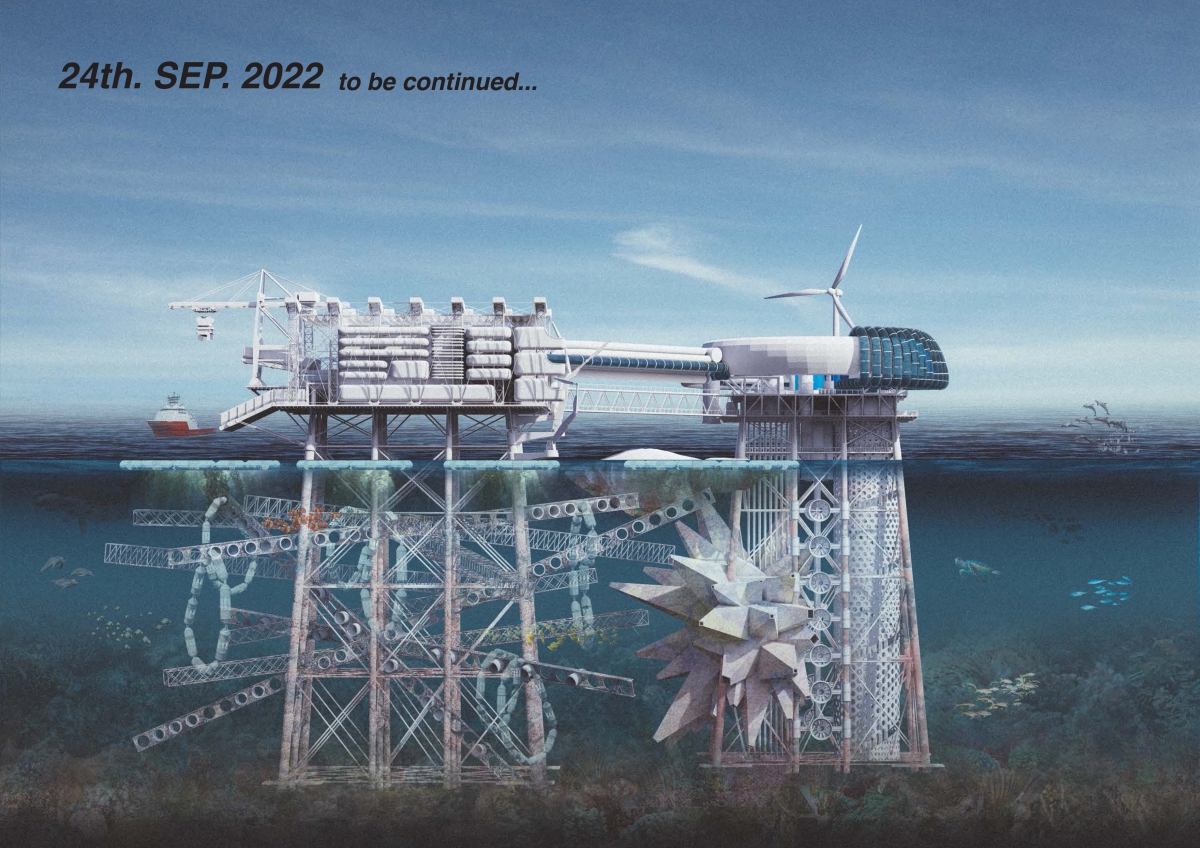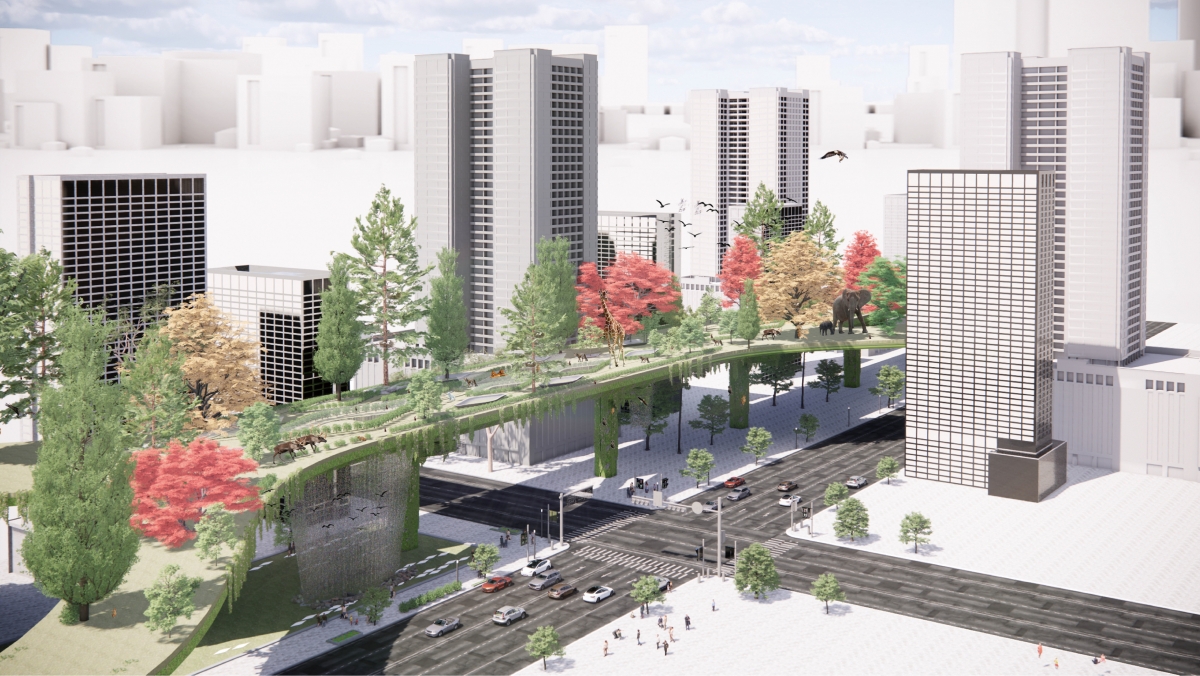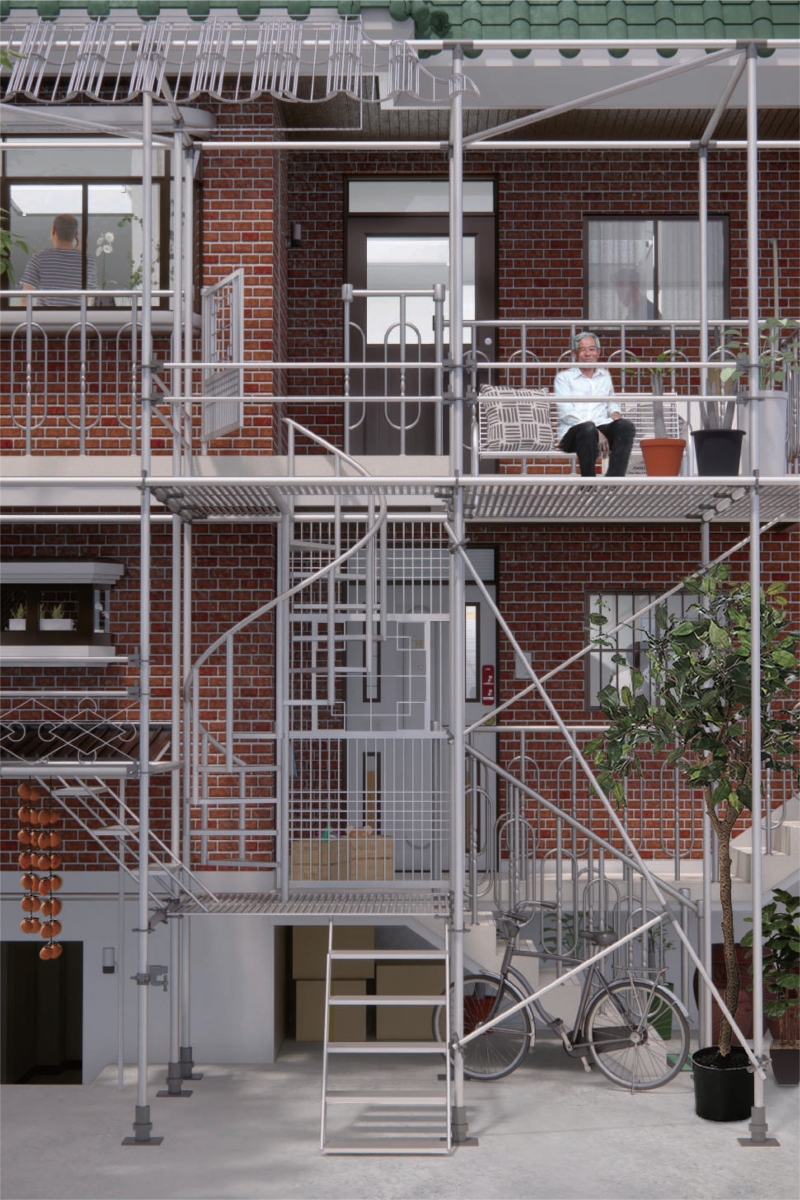
The Space Prize for International Students of Architecture Design goes back to 1975. It started as Space Art Prize established by SPACE GROUP. Three years later, in 1978, the title was changed to Space Prize and it widened its range from fine arts such as ceramics, sculpture, and print to architecture, and in 1983, Space Prize for Students of Architecture Design was added as a subcategory. From 1984, it became an independent design competition, and since 2001, it expanded participation to international students and became the present The Space Prize for International Students of Architecture Design. SPACE GROUP has held the event ‘to inspire architecture students of creativity, providing an active exchange through their ideas of works.’ This award marks the 34th anniversary this year.
Architecture in Precarious World
Cho Minsuk (principal, MASS STUDIES) and Anthony Fontenot (professor, Woodbury University), jury of the Award selected this year’s theme as ‘Architecture in Precarious World’. At the theme briefing in last March, Cho explained why they selected the theme, saying ‘We would like to look into the present global pandemic and the ongoing social, economic, and ecological crisis over the last few decades’ and ‘this competition will be used for a kind of research, as well.’ The jury further explained that the present period in the early 21st century, surrounded by crises such as massive income gap and social inequality, sea level rise, and frequent wildfires, can be defined by ‘omnipresent fragility’. In this situation, they said we should think about fundamental questions such as ‘Is architecture a relevant tool for addressing such a precarious world?’ and if so, ‘how might it be used to respond to these overwhelming challenges?’ The jury also suggested specific methods to approach this situation. This is a sequence of thoughts, and each stage was used as evaluation criterion of this competition; ‘Define a precarious state’, ‘Situate oneself as an engaged architect’, ‘Locate the intervention in a specific context’, and ‘Design with intention’.
Towards an Alternative Nature
Lee Gunhui + Kim Jingu + Yoon Wonsik (Chung-Ang University · Chung-Ang University Graduate School), the grand prize winner, paid attention to disappearing nature in our city as a precarious world. They pointed out that ‘In contemporary society, architectural space and urban structure have evolved to maximize efficiency according to the commercial logic, and natural space is disappearing, which deepens inequalityʼ They found the clue to the solution of the problem in the multi-family housing site in downtown. They argue that the building type has ʻmarginal spaceʼ in alley, façade, and small parts. They explained that marginal space is ʻa place where anonymous palimpsest accumulates and grows,ʼ and it is a place that can provide people with a variety of spaces and experiences of nature. And they defined this as ‘alternative nature’. They proposed a ‘modern palimpsest’ to allow the alternative nature to continue. They explained that they would like to intervene in an attitude that respects and continues the way that existing things have accomplished, as if a trail is created in a forest with flourishing nature. Their site is Cheongpa-dong and Seogye-dong, located on the west side of Seoul Station, which has various types of housings from hanok to villas. A modern palimpsest consists of a platform and a structure. Its space satisfies the needs of residents and is partially used as a public domain, designed to be maintained under social consensus. They suggested a specific implementation plan which creates frames with a thin steel structure. They explained how to apply customized modern palimpsest in different situations and presented with examples with the four representative housing types in the area: hanok, two-storey townhouse, villa with exterior core, and villa with internal core. They said that the palimpsest will act as folly in a city, and common memories accumulated there will bring new changes to the city. The jury evaluated, ‘In the near future, this unique area is potentially in a precarious state of either becoming another site of tabula rasa redevelopment or a “Bukchonlike” gentrified theme park. This proposal successfully avoids these scenarios and suggests an alternative that is both pragmatic and poetic’. The project is distinguished by its careful observation and understanding of the urban context demonstrated through intense, hyper-detailed documentation of existing architectural elements that results in particular social conditions and proposal of expanding into new types of outdoor social spaces while maintaining the desirable qualities of the existing city fabric.
And Many Other Worlds
Hong Jinwon + Lee Hakyeon (Ajou University), winner of the prize of excellence, raised a question: Is it right for mankind to become the subject and influence the global ecological cycle? Paying attention to the sea level rise that many countries are facing, they proposed a flexible response method that minimizes human intervention and rebalances the ecological cycle. Their site is Lake Sihwa, located south of Incheon International Airport, where freshwater meets seawater. They proposed habitat for birds, fish, microalgae, and benthic organism by a tetra ball that can hold 540 times more water than a tidal flat, and underwater landscape using a 3 × 2.5m floating wetland. The jury said that they were impressed by ‘the largescale intervention and the attention to detail of a complex multidisciplinary research displayed throughout the proposal.’
Three teams won the special prize. Hwang Haeseung + Na Gyeongjoon (Sahmyook University · Hanyang University ERICA) paid attention to the precarious state of the divided relationship between the two Koreas and said buffer zones will be required for differences in economy, politics, and ideology in the event of unification in the future. They proposed a modular system that will convert military bases deployed along the border of Cheorwon- Yanggu-Geumgang into a space of recovery and buffering after unification. Park Jiwon + Choi Daejoon (Kangwon National University) paid attention to the marine ecosystem. Like Hong Jinwon + Lee Hakyeon, they targeted the ocean and took an attitude to save nonhuman agents, but they intended to intervene more actively in the marine ecosystem while the previous team minimized human intervention. They proposed the conversion of an offshore oil platform for oil drilling into an ‘ecological machine’ which functions as the base for collecting garbage and are used as habitats for corals, fish, seaweed, seals, dolphins and birds. Ko Gyumin + Kim Yesol + Park Sejin (Hanyang University Graduate School · Hanyang University ERICA) started from a question ‘What is a way to give subjectivity to the ecosystem in architecture?’ and proposed transformation of elevated highway bridge to an ‘elevated green belt’ for various species. For each winner of the special prize, the jury stated their opinion of selection as follows; ‘inspiring new ways of thinking about this and other tragic sites’; ‘appropriating a 20th century carbon-intensive infrastructure and its conversion into a 21st century post-carbon facility’; ‘provocative strategy of biodiverse expressway and an alternative strategy for thinking about the future of outmoded urban infrastructures’.
In addition, human waste disposal in Kibera region in Kenya, juxtaposition of apartments and low-rise residences in Korean cities, and closed spaces like schools were found as precarious worlds. The jury said the winners of this competition ‘show exemplify an awareness of the wide range of urgent concerns confronting contemporary culture, locally, globally, in the urban context, and in the grand scale of nature.’ They said they hoped that ‘through astute observations and insightful architectural responses will provide an opportunity to both prevent and find resolutions to our precarious world.’ (written by Choi Eunhwa)
